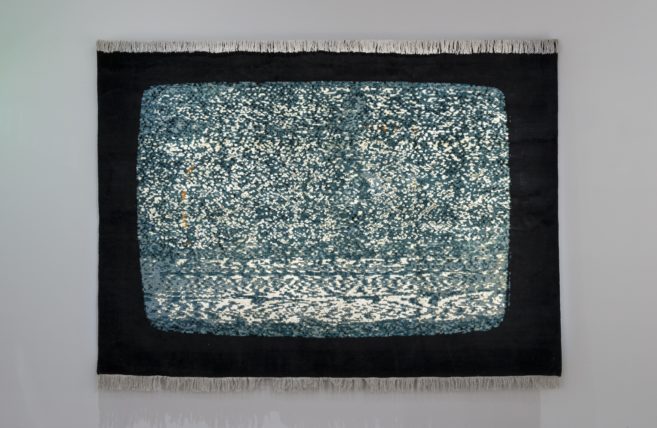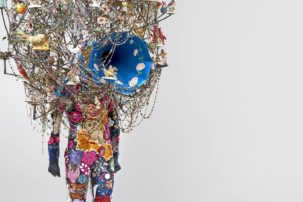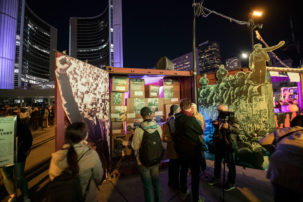During a June 28 discussion following the 48-hour international streaming of Arthur Jafa’s landmark film Love Is the Message, The Message Is Death (2016), poet, scholar and philosopher Simone White stated that “our attitude about institutional entanglement [with race] has to change.” The hefty new volume Saturation: Race, Art, and the Circulation of Value, part of the New Museum’s Critical Anthologies in Art and Culture series, also sounds this call, uniting artist portfolios, roundtable discussions and scholarly texts inside a cover that displays Kent Monkman’s painting Miss Chief’s Wet Dream (2018). With contributors including Lisa Lowe, Sarah Schulman, Lorraine O’Grady, Hortense J. Spillers and Ralph Lemon, among others, Saturation takes on art broadly, in tandem with racial capitalism analyses, disability justice approaches, and critical race, queer, diaspora and sexuality studies.
Editors C. Riley Snorton and Hentyle Yapp refer to “saturation” as a visual intensity of colour, an aural density of sound, an institutional level of representation, and more—all with the awareness that representation within cultural structures is not enough, and that a parallel “oversaturation” of individual bodies by institutional demands is also a reality.
Divided into two main sections, Saturation focuses first on “The Saturation of Institutional Life: Race, Globality, and the Art Market,” then on “Methods of Racial Matter and Saturation Points.”
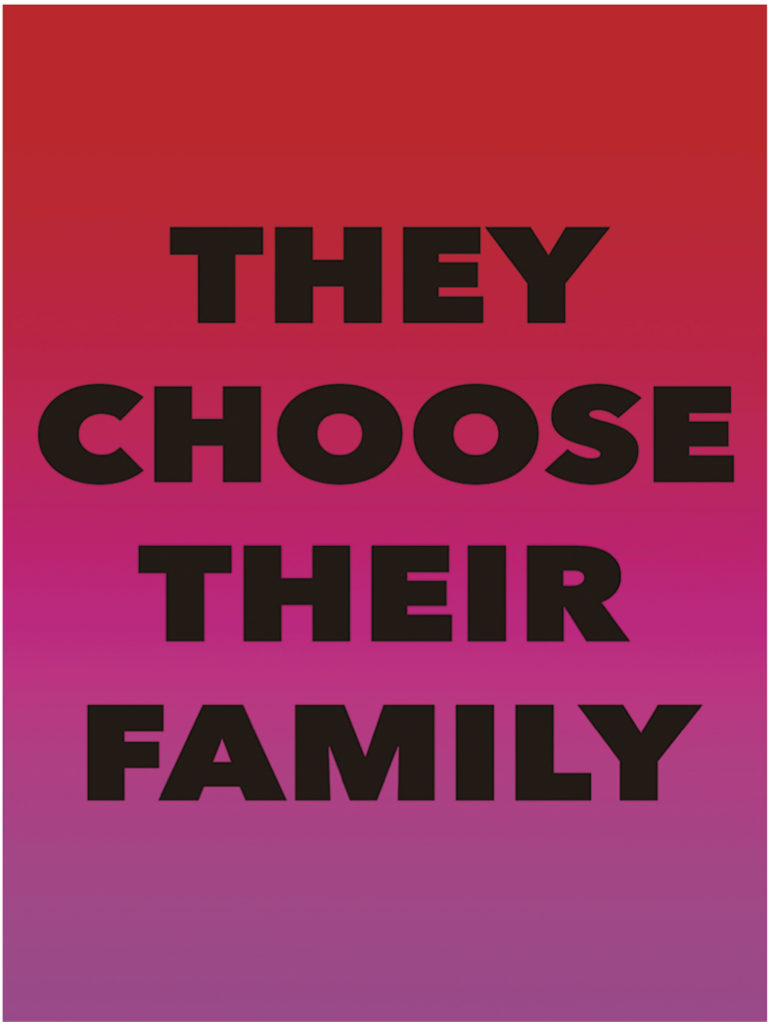 Jeffrey Gibson, THEY CHOOSE THIER FAMILY, from the series To Name An Other, 2018–19. Digital image, dimensions variable. Courtesy the artist, Sikkema Jenkins & Co., Kavi Gupta, and Roberts Projects.
Jeffrey Gibson, THEY CHOOSE THIER FAMILY, from the series To Name An Other, 2018–19. Digital image, dimensions variable. Courtesy the artist, Sikkema Jenkins & Co., Kavi Gupta, and Roberts Projects.
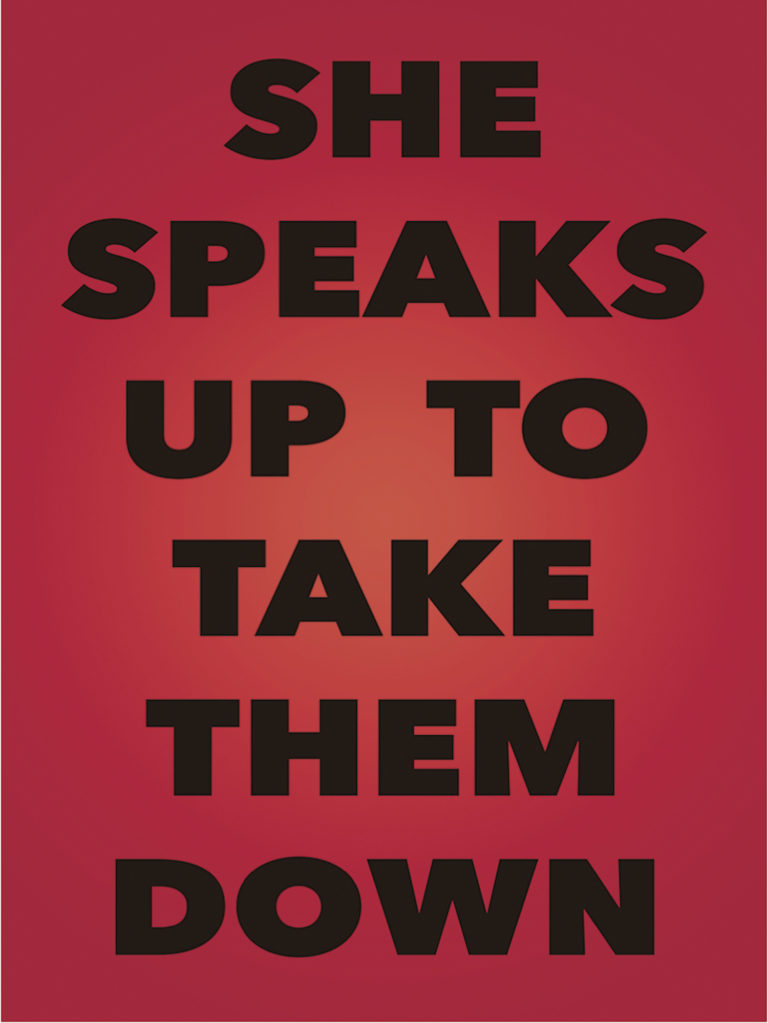 Jeffrey Gibson, SHE SPEAKS UP TO TAKE THEM DOWN, from the series To Name An Other, 2018–19. Digital image, dimensions variable. Courtesy the artist, Sikkema Jenkins & Co., Kavi Gupta, and Roberts Projects.
Jeffrey Gibson, SHE SPEAKS UP TO TAKE THEM DOWN, from the series To Name An Other, 2018–19. Digital image, dimensions variable. Courtesy the artist, Sikkema Jenkins & Co., Kavi Gupta, and Roberts Projects.
Black feminist scholar Sarah Haley’s essay “Racial Capitalism’s Gendered Fabric” sets the tone for the first group of texts and rest of the anthology, articulating the history of racial capitalism through the prism of Black maternity and reproduction, from slavery and carceral slavery to carceral racial capitalism. It’s a cogent piece, leading to a question: What is capitalism without enslaved labour?
The traumas enacted by capitalist white supremacy are further addressed in Candice Hopkins’s text “The Appropriation Debates (or The Gallows of History).” Hopkins establishes the perils of re-representation in Sam Durant’s Scaffold (2012), a public sculpture that partially replicates gallows from the 1862 execution of 38 Dakota men in Mankato, Minnesota. Identifying the artist’s inherent privilege, she contends that his white voice “speaks for” the Dakota in a painful repetition of trauma and dominance, rather than a meaningful acknowledgement and memorialization.
Given the scope and variously formatted contributions, Saturation reads dynamically, if a bit unevenly. Conversations formulated around the book’s theme run a bit flat for me—not for any lack on the discussants’ parts, but because, for some of these conversations, there is no real back-and-forth discussion, only short statements from each speaker.
 “Take It Down” signs protesting Sam Durant’s Scaffold, Minneapolis Sculpture Garden, 2017. Photo: Lorie Shaull/Flickr.
“Take It Down” signs protesting Sam Durant’s Scaffold, Minneapolis Sculpture Garden, 2017. Photo: Lorie Shaull/Flickr.
Some of the most persuasive contributions in the volume are the artist portfolios, pairing words and observations with colour reproductions of their work. In his portfolio in the book’s first section, Jeffrey Gibson declares: “I engage the limits of representation by ignoring them,” accompanied by brightly coloured digital images with text works from his To Name An Other series (2018–19). Approaching representation differently, and in the second section of the book, Byron Kim describes his struggle to successfully capture friends’ skin tones in paint for his project Synecdoche (1990–).
The penultimate text in Saturation, literary critic Hortense J. Spillers’s forceful 1982 address at Barnard College, “Interstices: A Small Drama of Words,” attempts to locate Black womanhood and sexuality in relation to feminist (read: white feminist) discourse and culture more widely. The Black woman, Spillers writes, is subjected to “lexical gaps” and “the paradox of nonbeing”: her sexuality cannot be pinpointed, her womanhood is systemically excluded and erased. Taking this as impetus, she summons a “dialectics of a global new woman” and redistribution of power; the essay is positioned as if to complete the circle begun by Haley’s opening essay.
It’s tempting to think that Saturation will make a dent in pre-existing literature on race, art and culture more widely. But, as critic Hilton Als said recently on the New Yorker podcast, “It’s the writer’s ego and egotism that believes that once you write something like this, that all racism will disappear, and people will behave decently.” Similarly, it’s often my naive aspiration that through the act of reading or writing, I too can obliterate racism. More realistically, the discussions and works in this anthology challenge the concept of representation as saturation—and the concept of saturation as representation—and yearn for real institutional change imbued at its highest levels.

